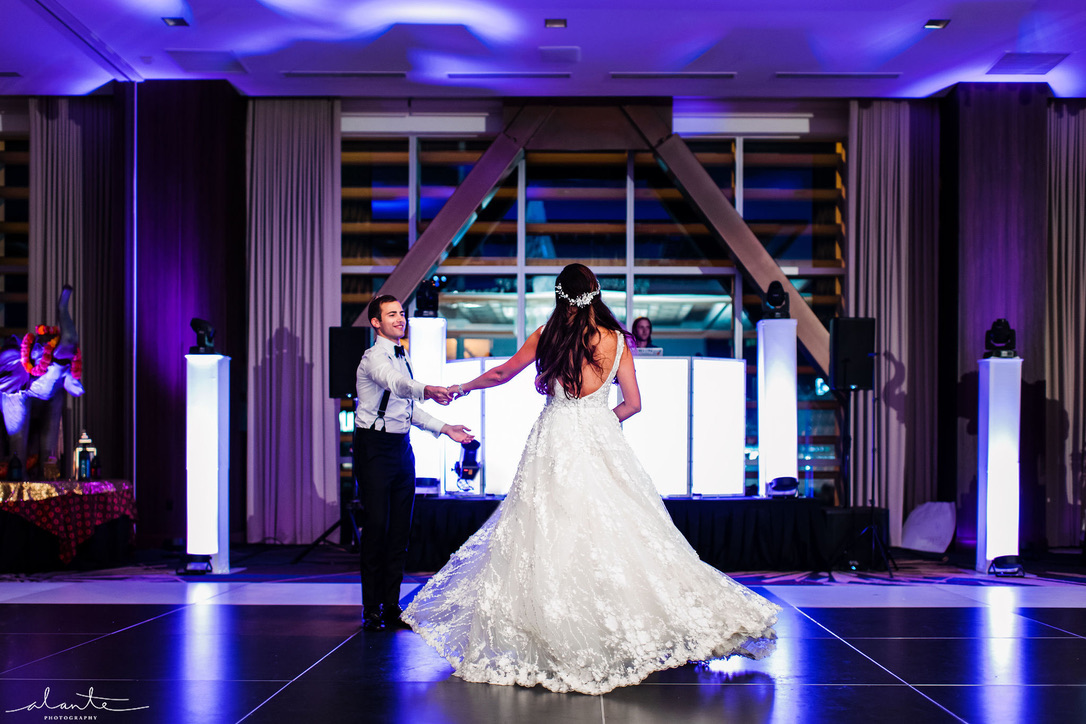On this week’s episode, we take you back in time, way back in time, to discover the roots of the modern wedding. Erin and I go in depth, taking a historical perspective on modern wedding traditions to find their origin stories, drawing connections between the past, present, and future of weddings. Take everything you think you know and throw it out the window! These revelations on how the modern wedding came to be are sure to surprise, as well as provide context for the wedding industry itself, historical trends, and may even give you some fun new ideas to incorporate into your own upcoming wedding!
Below: Queen Victoria Pictured at Her Wedding

Transcript:
- Most marriages in medieval times were formalized only by a public announcement and a kiss. Any formal ceremonies were typically held over a local blacksmith’s anvil, and it was not until about 1215 that weddings became involved with churches.
- The best man back then was not the groom’s closest friend or relative but instead was the best swordsman that they could afford to hire to stand by them and insure that the wedding went on smoothly
- Quite the opposite, as bridesmaids originally wore similar dresses to the bride to confuse her exes and outsmart evil spirits. That way, the evil spirits wouldn’t know which woman in the group was getting married.
- Similarly, the tradition that we see today of a father walking his daughter down the aisle originated as a man walking the bride down the aisle in order to ensure her safety on the way to the groom. Safety was such a key focus in weddings at this time because many times the marriage was a “marriage by capture” (Doll, 2016). This continued into the 16th century when it was known as “stealing the bride” (Doll, 2016). Members of the wedding party had to be prepared to protect the bride and groom and fight off the bride’s family should they come protest the wedding or try to steal her back. The groomsmen, also known as “Bride’s Knights” (Doll, 2016), were the ones responsible for assisting in the kidnapping and later keeping the wedding on track and free of interruptions. Interruptions, other than the bride’s family, that the groomsmen had to look out for were that “another suitor would try to take her, or she might try to escape. This is also where we find the origin of the honey moon, the groom would kidnap the bride and take her somewhere far away so that no one would be able to find her.
- The bride’s dowry was typically the money that was used for the wedding ceremony and feast while the groom’s tended to be money for a home or to support them going forward in their life together. The guidelines for who paid for what were laid out in a relatively clear-cut manner back then especially compared to nowadays when the person responsible for paying for a wedding could be any one person or a combination of people involved in the lives of the spouses.
- Flower’s began to appear in weddings during the Elizabethan era. Flowers in the Elizabethan Era played a much larger role in the wedding. Bridesmaids were responsible for creating bouquets and the garland of flowers that the bride held until the end of her wedding when it was placed on her head. At this point in time, the activities of bathing and washing clothes were considered a luxury and did not occur often, so in addition to serving as decoration for the bride and the wedding, the flowers acted as a way to cover up the fragrance of dirty individuals. Pungent flowers such as fresh rosemary, roses and even garlic stems were used in order to add a more pleasant fragrance to the ceremony.
- Wasn’t until the 1800’s that Women began to really have much of a say regarding their wedding day. The concept that the wedding day is all about the bride is a very modern concept. This began by her ability to choose the day that it would take place, but that was it.
- This is the period in which we get to see the tradition of the white wedding dress as well. This was likely because at that time white was a very popular color to wear in general. “White was the most popular color for debutantes, but soft colors such as pink or blue were worn, too.”
- Question: What are your thoughts on the wedding dress, specifically the color, my mother wore a red wedding dress for her 2nd wedding.
- Victorian Era: Wedding Dresses become more ornate
- Flowered path down the aisle: This was “because it was believed that this ensured a happy path to life for the bride” – reminds me of the flower girl tradition.
- It was during the Victorian ages, the bride originally tossed her bouquet to a friend as she left the festivities to keep that friend safe (by warding off evil spirits, of course) and to offer her luck” (The Knot, 2015). This luck was believed to help the bride’s friend, that caught the bouquet, become the next one to get married.
- Other sources indicated that the real reason for the bouquet toss was to distract the guests so that the bride and groom could consummate the marriage.
- The garter toss: This tradition originated in England and France. Guests would try to obtain a piece of the bride’s dress for good luck, which often left the bride nervous and tense throughout the entire ceremony in anticipation of her dress being ripped to shreds by the eager mob of wedding guests.
- White dresses may have been introduced in the Regency Era but in the Victorian Era the white wedding gown gained great popularity after Queen Victoria’s wedding in 1840.
- Weddings in America during the same period were transactional, a bride was married to provide children, look after the house, cook for the family. Love had little to do with it.
- It wasn’t until the mid 1900’s that the wedding industry began to look the way we think of it. Weddings became more elaborate, and as a result people began to hire outside help. Here we also see the beginning of the bachelor party, destination weddings, engagement parties, and other pre wedding events and traditions
- After WWII formal weddings became more popular, as weddings became more complex, people began to hire vendors to assist in the days affairs. Much more personalization.
- This coincides with the rise in the employment of women. This is notable because it meant women had less time to plan their own weddings. Typically the first wedding planners would have been women as well, so this adds up. If women wanted to make a career out of wedding planning, it was now more societally accepted to do so.
Where do our some of our favorite wedding traditions come from?
- Tying the knot (handfasting) dates back to 7000 BC: Many cultures have adopted the once pagan tradition but anyone can incorporate it into their own ceremony! (Brides.com)
- Jumping the Broom: is a tradition that started during slavery in America, slaves would jump over a broom to get married. This is still seen today and carried forward in modern African American weddings. (Brides.com)
- Money Dance: A ritual you may see at a wedding is the money dance, which is also called the money spray, dollar dance, and apron dance. The money dance is part of many cultures, but it is most common among Yoruba and Igbo tribes in Nigeria and the countries that Nigeran people have immigrated to. The money dance occurs during the wedding reception. When the newlywed couple dances and celebrate their good fortune, guests toss money at them. The money is seen as a fund for the couple to start their new life and can be in any amount. There are people designated to collect the money off the ground for the newlyweds once the money dance has ended. (Brides.com) Personally, I have seen this done mostly at Phillipino weddings, Mexican weddings, and other Spanish influenced cultures.
- The Wedding Cake: It was common for grooms to take a bite of bread at the wedding, crumbling the rest over the bride’s head for good luck. Guests would then scramble around her feet to pick up the crumbs, in order to absorb some of that good luck. This is where we get the “shoving the cake” in the newlyweds faces, the bread was later replaced with the wedding cake.
- Rice Throwing: was originally done to “shower” the bride and groom with fortune, prosperity, and fertility. Today, you’re more apt to seeing bubbles used in its place to celebrate the couple. Less clean-up!
- The First Kiss: In the early days of weddings, it was customary for the priest to give a holy “kiss of peace” to the groom, who would then pass the kiss on the bride. This was done to bless the marriage inside of the church, giving way to the common phrase heard today at most ceremonies: “You may now kiss the bride.”






